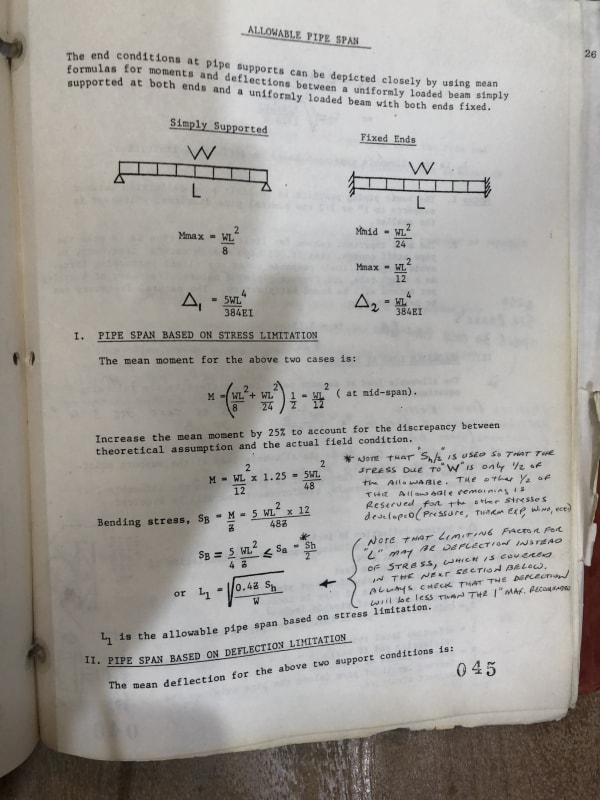Dave Thunes
Industrial
I'm attempting to develop some span tables for various pipes we work with. I looked though B31.1 and MSS SP-69 as a reference.
The first thing I tried was duplicating the tables for schedule 40 CS vapor lines (which are all deflection limited). My numbers are close, but not the same, especially when I get to larger bore pipes. Can someone please tell me what I'm doing wrong?
For example, when I calculate the max span for 24" pipe I get 40' where B31.1 and MSS have 42'.
The first thing I tried was duplicating the tables for schedule 40 CS vapor lines (which are all deflection limited). My numbers are close, but not the same, especially when I get to larger bore pipes. Can someone please tell me what I'm doing wrong?
For example, when I calculate the max span for 24" pipe I get 40' where B31.1 and MSS have 42'.
Code:
Pipe Size 24 in (nom)
Pipe Schedule 40
Material A53-B
Thickness 0.687 in
Pipe OD 24 in
Pipe ID 22.626 in
OD Area 452.4 in^2
ID Area 402.1 in^2
Steel Area 50.3 in^2
Density of steel 0.283 lb/in^3
Weight of Steel 14.2 lb/in
W_d 170.9 lb/ft
Modulus of elasticity E 29.4M lb/in^2
Moment of inertia I 3421.3 in^4 I=PI*(D^4-(D-2*t)^4)/64
Max deflection x 0.1 in
Max span l 482.6 in l=((384*E*I*x/(5*W_d))^(1/4)
40.2 ft

